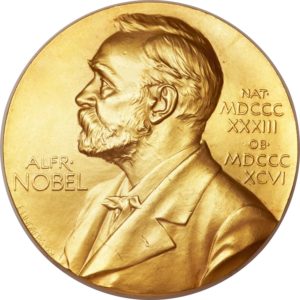
Edmund S. Phelps
1933-

Edmund S. Phelps was awarded the 2006 Nobel Prize in economic science “for his analysis of intertemporal tradeoffs in macroeconomic policy.” He focused on two distinct areas of macroeconomics: the tradeoff between unemployment and inflation and capital accumulation and economic growth.
In the early 1960s, many economists believed that the tradeoff between unemployment and inflation was stable. (See phillips curve) Government policy makers, according to this view, could pick a combination of inflation and unemployment almost as if they were ordering from a menu.
In the late 1960s, however, Phelps challenged this view by going back to basics—that is, by considering how individual employees and employers act. He assumed that employees would act based on their expectations of future inflation. If they expected, say, 3% inflation, they would build this into their wage bargains.
But what if the Federal Reserve increased the money supply at a rate that caused a 5% inflation rate? Then, with this higher inflation rate, wages offered would be higher than expected also. Unemployed workers looking for work would see wages that they would mistakenly think were higher in real terms and would, therefore, accept jobs at these wages sooner than otherwise. Millions of unemployed workers taking jobs just a few weeks earlier would result in a lower unemployment rate. Then, however, workers’ expectations would be adaptive; that is, they would adjust to reality. They would realize that the wages weren’t as high in real terms as they had thought, and some would quit and look for more lucrative work, thus slowly raising the unemployment rate. In other words, policy makers could temporarily reduce the unemployment rate by making inflation higher than people expected, but they could not achieve a long-run reduction in unemployment with an increase in inflation. In the long run, then, there is no tradeoff between inflation and unemployment. This striking finding is now mainstream economic wisdom.
Phelps was not the first to point this out. 1976 Nobel laureate milton friedman had done so in his 1967 Presidential Address to the American Economic Association,1 as Phelps himself noted. And Phelps also credited Austrian economist ludwig von mises’ book The Theory of Money and Credit, first published in 1911. But Phelps gets the credit because—this is not his fault— academic economists now insist on formal models. Nor was Phelps the last to point out the “no tradeoff” result. 1995 Nobel laureate robert lucas introduced “rational expectations” rather than “adaptive expectations.” The idea is that people would try to anticipate the future based on how the monetary authorities had acted in similar circumstances in the past. With this approach, Lucas found even stronger results. Lucas’s model implied that the only way that policy makers could use monetary policy to affect the unemployment rate was by being unpredictable.
Phelps’s other major work acknowledged by the Swedish Academy was on capital accumulation and economic growth. In the early 1960s, he derived the “Golden Rule” of capital formation. The rule is that if one’s goal is to attain the maximum consumption per capita that is sustainable in the long run, annual saving as a percent of national income should equal capital’s income as a percent of national income. In the late 1960s, Phelps did further work in this area with Robert Pollak. They argued that the government should force people to save more than they wish, on the grounds that people put too little weight on their children’s well-being. It seems that the political system, though, does the opposite, especially at the federal level. The federal government taxes the politically powerless younger generation to subsidize—through Medicare and Social Security—today’s politically powerful elderly.
Edmund S. Phelps is difficult to categorize politically. On the one hand, he decries the lack of dynamism in Europe and wants European governments to deregulate their economies.2 On the other, he believes that low-end jobs do not pay enough and wants the government to subsidize such jobs. He understands that the minimum wage prices people out of labor markets, resulting in “idleness, deprivation, drugs and crime.” So, in his 1997 book, Rewarding Work: How to Restore Participation and Self-Support to Free Enterprise, he advocated a vast subsidy program that would have cost $125 billion in 1997 dollars, a substantial 1.5% of that year’s GDP.
Among Phelps’s other contributions, two stand out. The first is on dynamism and entrepreneurship. In Mass Flourishing: How Grassroots Innovation Creates Jobs, Challenge, and Change, Phelps argues that a competitive innovative economy is good, not just for consumers, as joseph schumpeter argued (see creative destruction), but also for workers and producers. In Phelps’s view, a dynamic competitive economy helps humans to flourish. Phelps worries that the U.S. economy has become as sclerotic and corporatist as European economies. What is needed for dynamism, he argues, is not just a good amount of economic freedom but also individualism.
The second is on population. In 1968, long before Julian Simon popularized the idea that population growth is good, Phelps made the same argument: The more people there are, the more ideas are developed, and ideas, once developed, can be transferred to others at almost no cost. He wrote: “One can hardly imagine, I think, how poor we would be today were it not for the rapid population growth of the past to which we owe the enormous number of technological advances enjoyed today. . . . If I could re-do the history of the world, halving population size each year from the beginning of time on some random basis, I would not do it for fear of losing Mozart in the process.”3
Edmund S. Phelps earned his B.A. from Amherst College in 1955, majoring in economics. He earned his Ph.D. in economics from Yale University in 1959, studying under future Nobel laureates James Tobin and Thomas Schelling. After graduating, he worked for the RAND Corporation for a year. He then taught at Yale (1960-1962), the Massachusetts Institute of Technology (1962-1963), Yale again (1963-1966), the University of Pennsylvania (1966-1971), New York University (1978-1979), and Columbia University (1971-Present), where he has been the Director of the Center on Capitalism and Society since 2001. He has also held positions in Europe, as a consultant for the European Bank for Reconstruction and Development (1992-1993), a Senior Advisor to the Consiglio delle Ricerche (1997-2000), and a Research Fellow at the Observatoire Français des Conjonctures Économiques (2001-Present).
About the Author
David R. Henderson is the editor of The Concise Encyclopedia of Economics. He is also an emeritus professor of economics with the Naval Postgraduate School and a research fellow with the Hoover Institution at Stanford University. He earned his Ph.D. in economics at UCLA.
Selected Works
Footnotes
Related Entries
Related Links
Edmund Phelps on Unemployment and the State of Macroeconomics, an EconTalk podcast, February 15, 2010.
Edmund Phelps on Mass Flourishing, an EconTalk podcast, November 11, 2013.
Arnold Kling, Modernism vs. Corporatism, a review of Phelps’s Mass Flourishing at Econlib, December 2, 2013.
Pedro Schwartz, The Plight of the Central Banker, at Econlib, September 2, 2018.
